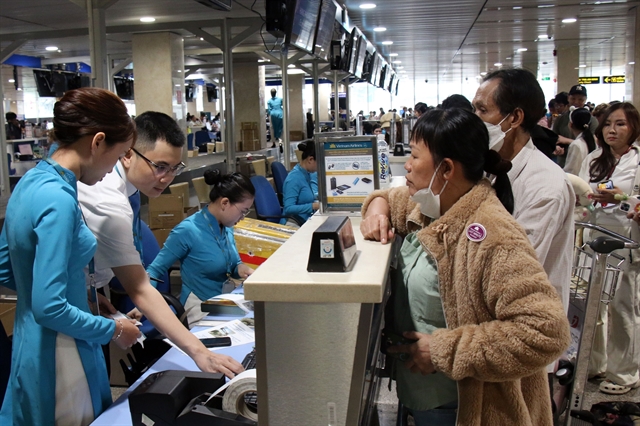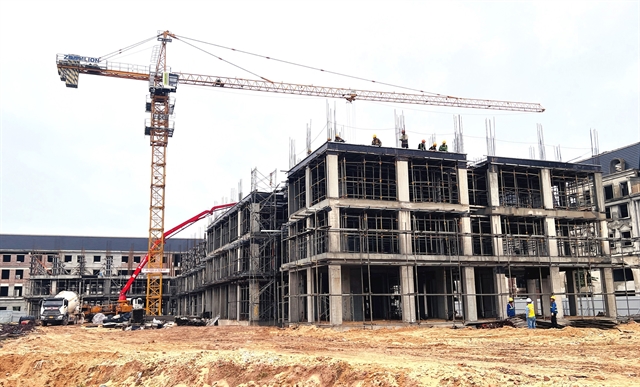 Society
Society

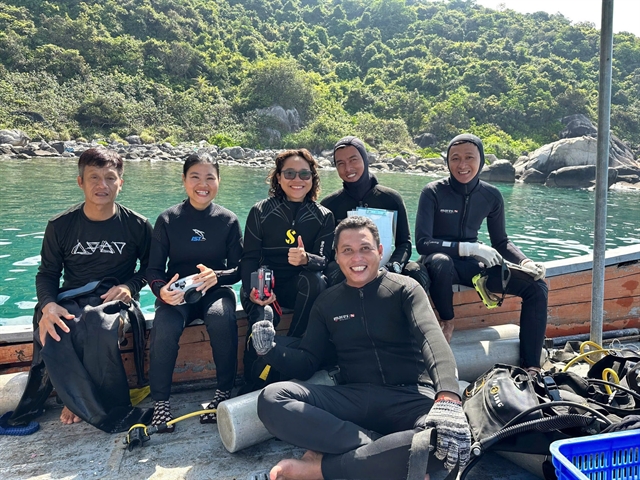 |
| The team for reviving coral reefs in Cù Lao Chàm. Photo tienphong.vn |
ĐÀ NẴNG –Beneath the waves around Cù Lao Chàm island, a team of young conservationists has spent nearly a decade quietly restoring and protecting the coral reefs that form the ocean’s green lungs.
Among them, Nguyễn Minh Toàn, 33, has devoted most of his time to nurturing coral reefs, seaweeds and the wider marine ecosystem. His work includes patrolling the sea to detect and prevent violations and spending hours diving deep to cultivate and restore damaged coral.
The restoration process is complex and requires meticulous care. It begins with surveying coral areas needing recovery, assessing environmental conditions and selecting suitable coral species. Coral nurseries are then established as sources of seedlings for replanting in damaged or bleached zones. Every step of planting and care is carefully monitored and recorded to evaluate long-term conservation effectiveness.
The team also organises dives to catch crown-of-thorns starfish and collect underwater debris and 'ghost nets' that threaten coral reefs and marine life.
Born on Cù Lao Chàm island, Toàn says his affinity for the sea and the profession runs deep. His strong, agile body and ability to swim and manage conditions on the seabed allow him to work in an environment where no mistakes are allowed.
For years, these young staff have dedicated themselves to regenerating the marine forests beneath the surface, helping to secure a healthier future for the island’s delicate underwater world.
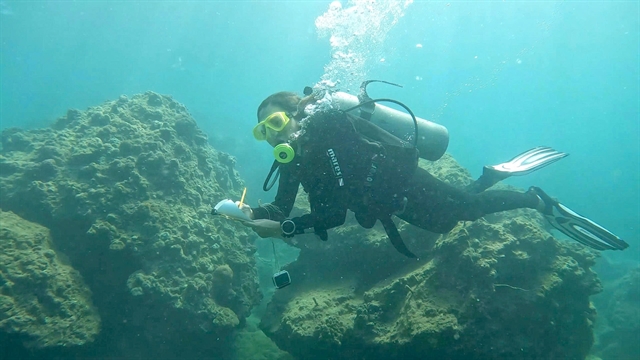 |
| Diving deep down taking notes of corals growing stages. Photo tienphong.vn |
For ten years, Toàn and his colleagues have set up dozens of coral nurturing gardens on the seabeds and watched the corals grow every day.
After six months, when the coral reefs have become stronger, the 'nannies' are taken to restore the 'empty' coral areas.
“The ideal time for planting corals is from March to July, which does not make the planters more comfortable but allows corals to have time to recover before the rainy and stormy season,” Toàn says.
“After planting, the corals are monitored and their growth rate is carefully recorded periodically. Therefore, the journey of coral restoration by the staff in charge of this work lasts from year to year. This job requires not only physical strength and technique but also passion.
“The love and pride of the third generation born on our island gives us the motivation to do a good job, which is also the most effective way to preserve the 'pearl' island that our ancestors left behind."
Reviving Cù Lao Chàm corals
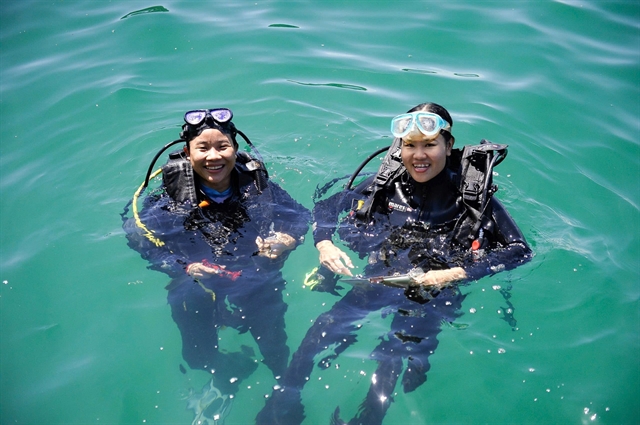 |
| Nguyễn Thị Hồng Thuý and Trần Phương Thảo. Photo tienphong.vn |
In the group of staff directly responsible for this work, there are two women, Nguyễn Thị Hồng Thuý, 30, and Trần Phương Thảo, 35.
Thuý was born in Cù Lao Chàm island commune. In addition to her swimming and diving skills due to her island 'genes,' Thuý has a special passion for work related to marine ecosystem restoration.
After completing her studies in Aquatic Resources Management at Huế University of Agriculture and Forestry in 2017, she started working at Cù Lao Chàm Marine Conservation Area.
Meanwhile, Thảo is from Hội An City. After graduating with a degree in Biotechnology from Đà Nẵng University of Technology, she also applied to go to the island.
The work of the two female experts often requires diving under the sea, directly participating in the cultivation and care of corals and seagrass, protecting flora and fauna and cleaning the seabed for coral growth.
Working in the deep-sea environment is already hard for men, but the two young women who have been attached to the deep sea for nearly ten years have made many people admire them.
Many times they have experienced terrifying moments diving at the bottom of the sea, such as encountering water upwelling and rolling water incidents. The swirling, turbid water seems to sweep and hold the body tightly. At a depth of nearly 10 metres, encountering this water upwelling incident, if you do not know how to handle it, the risk is very high.
"When encountering such incidents, you must stay calm, relax your body until the water upwells, the more you struggle, the more you push yourself into a dangerous vortex," Thảo says.
“The most amazing moment is when I dive down and see coral reefs have recovered. Fishes and many other marine species swimming in the reefs create an incredibly beautiful scene, like being lost in an aquarium.”
Meanwhile, Thuý admits that doing the job requires not only physical health and technique but also courage and a bit of stubbornness.
“Especially if you do not have passion and love for the job, it will be difficult to stick with it for a long time and work effectively,” Thuý says. “The saddest thing is to witness coral reefs damaged, destroyed or bleached by external impacts. There are still situations of littering the sea, or scuba divers accidentally or intentionally breaking coral reefs.”
Cù Lao Chàm was recognised as a world biosphere reserve in 2009, with a total area of 23,500 hectares.
There are over 1,035 species of animals and plants living on the island and 1,309 species of marine life, including many endangered, precious and rare species that are prioritised for conservation in Việt Nam and the world.
The current state of corals, seagrasses and ecosystems is still affected by many objective and subjective factors, including human impacts, according to vice director of Cù Lao Chàm Marine Conservation Area Lê Vĩnh Thuận.
"Tourism development and large numbers of tourists are great opportunities but also challenges in terms of waste, food consumption demand leading to the risk of overexploitation of seafood resources, all of which can have negative impacts on the environment and marine ecosystems," Thuận says.
Protecting coral reefs in Cù Lao Chàm is one of the activities most responded to by the local community.
The encouraging results after efforts to protect and replant are the coral area in Cù Lao Chàm has increased in both area and coverage, especially as the community's awareness is very high in fishing activities, Thuận adds. VNS

